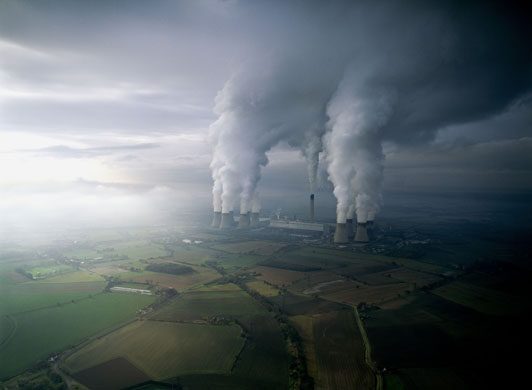The amendment was first put forward by the Federated States of Micronesia in 2009 on behalf of countries most vulnerable to climate impacts, including low-lying islands and coastal countries already suffering from accelerating sea level rise, and agriculture-dependent countries of Asia and Africa already suffering drought and shifting rainfall. The United States, Canada, and Mexico followed with a similar HFC proposal.
The proposals would reduce 85-90% of HFC production and use, achieving climate mitigation equivalent to 100 billion tones of CO2 by 2050. HFCs are growing at such a fast rate that if they are not controlled they could make up more than one-third of climate forcing by mid-century. The growth in HFCs is a direct result of the previous phase-out of chlorofluorocarbons (CFCs) and the ongoing phase-out of hydrochlorofluorocarbons (HCFCs) under the Montreal Protocol. This is the first year that discussions of HFCs and climate change dominated the plenary sessions.
“The HFC amendment is the most politically feasible strategy the world has to achieve fast climate mitigation,” said Durwood Zaelke, President of the Institute for Governance & Sustainable Development, who attended the meeting. “Indeed, agreeing to the Montreal Protocol amendment could provide the missing momentum for a broader climate deal under the UN Framework Convention on Climate Change.” The Montreal Protocol has all UN members as parties, and all consider the treaty to be fair.
“The amendment also has the advantage of administrative simplicity”, according to Zaelke. “It focuses on only one gas, HFCs, and uses a treaty that already has the expertise it needs to quickly phase down production and use of these man made chemicals.” The expertise comes from phasing out 96 similar chemicals over the past two decades, including the chemicals HFCs are now replacing, CFCs and HCFCs.
Another advantage, and “a key political point for developing countries,” according to Romina Picolotti, former Minister of Environment for Argentina, “is that the Montreal Protocol fully implements the principle of ‘common but differentiated responsibility’.” The treaty does this by providing funding to reduce controlled chemicals, by delaying obligations for developing countries for several years, and by supporting capacity building.
The HFC amendment also has the advantage of producing fast cooling of the climate system because most HFCs have lifetimes of only two to three decades. “Reducing HFCs and other short-lived climate forcers like methane and black carbon can keep warming from passing dangerous limits for 30 to 60 years,” said Zaelke, “provided we also reduce CO2. This is critical for the survival of the world’s most vulnerable countries.”
India and China acknowledge that HFCs are a critical climate issue, but argue that their mitigation should be conducted exclusively under the UN’s Kyoto Protocol climate treaty. The Kyoto Protocol addresses downstream emissions of HFCs, not their upstream production and use, as would be done under the Montreal Protocol. In addition, Kyoto only mandates reductions from developed countries, while Montreal would mandate reductions from all countries.
“As climate impacts continue to increase, and as the urgency for reducing climate pollutants grows, the island’s climate strategy looks better and better, especially for the most vulnerable countries”, said Picolotti.
Last year 91 countries issued a declaration supporting action to reduce HFCs, and more are expected to follow in the coming months. In February 2011, environment ministers from China, India, Brazil, and South Africa noted that the issue of phasing out HFCs warranted in depth study.
Also in February 2011, India and the US formed a joint HFC Task Force. The Indian Ministry of Environment & Forests noted that, “India recognizes that while HFCs … are a ‘problem’ from climate change perspective, since they have high global warming potential. India therefore recognizes the importance of addressing this problem, because of its own multiple vulnerabilities to climate change.”
Discussions on the HFC amendments will be resume at the Meeting of the Parties in Bali, Indonesia 21-25 November.
“China holds the key to the amendment and the world’s safety for the next 30 to 60 years”, said Zaelke. “The question is whether China is ready to be a global leader and help the world’s most vulnerable countries.”
More Information
The Institute for Governance & Sustainable Development’s mission is to promote just and sustainable societies and to protect the environment by advancing the understanding, development and implementation of effective, accountable and democratic systems of governance for sustainable development. See www.igsd.org or contact Durwood Zaelke, President, IGSD, [email protected].
Contact: Alison Feibel, IGSD: +1.202.338.1300, [email protected]



